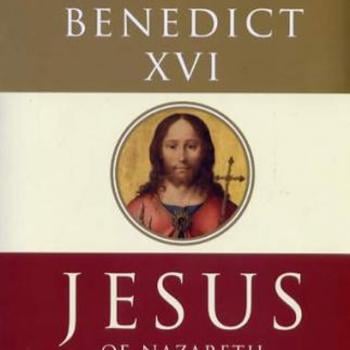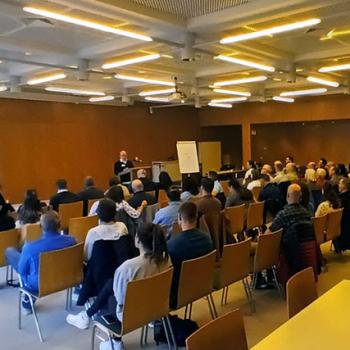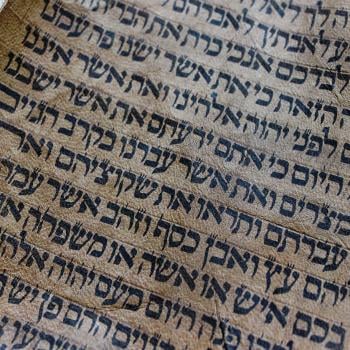The genre of the work in question has an impact on how it is interpreted. There are several examples within the pages of Holy Writ that hep demonstrate this point. The book of Revelation’s primary genre is Apocalyptic. We would apply different standards to Revelation than the Gospel of Matthew which is an ancient biography. With that in mind it is essential to understand the genre, and any sub-genres, of John so we can properly interpret the passage in question. This article is a companion piece for another I wrote on 1 John which can be read here.
Genre of 1 John
First and foremost, the genre of 1 John is that of a letter or epistle, but it does not fit completely into that category[1]. As previously stated, it lacks some of the standard features of a letter, such as a salutation[2]. This leads to an issue for simply categorizing it as a letter since it is not only missing a salutation, but it does not mention a specific audience or have a closing. These were all categories included in a letter in the Greco-Roman world[3]. This has led some to think that the letter was a sermon that was written down[4]. Though that is logical, there are several parts of 1 John that state that the author is indeed writing. So, although it does not fit in the tight box of a letter it is best categorized as one.
This leads to another situation in which we must determine the type of letter that is being written. Raymond Brown has an interesting hypothesis that the structure of 1 John mirrors that of the Gospel of John and as such that helps identify structure and argumentation[5]. Brown goes on to states that the letter is a commentary of the parts of the Gospel of John that the opponents have taken and twisted into their own belief. The view is intriguing, and even plausible, but it does not lend itself to genre but more towards authorship.

A Circular Letter?
The theory that the letter was a circular letter to various communities is the most plausible. This would account for the lack of an opening and closing since it was not meant for only one community, but for all those in Asia Minor who were experiencing the issues in the letter[6]. Letters of the time also contains rhetorical devices and there were three prevalent types of rhetoric during this period. There was judicial rhetoric which related to truth and justice, deliberative rhetoric which related to interests of self, and epideictic rhetoric which related to values and attitudes[7]. It is meant to reinforce and reaffirm what is already held by the reader.
It is epideictic rhetoric that is utilized in this letter, and it is very evident in 1 John 1:1-10. This occurs after the prologue 1 John 1:5-6 where the author utilizes praise and blame[8]. There is a clear message that was taught, and if it is not adhered to then we are not practicing truth. This type of rhetoric lends itself to a lack of structure which fits 1 John quite nicely. Within the pages of 1 John there is also evidence off a rhetorical technique that is known as amplification. John is often repetitive, and he does this for good reason. This repetitiveness would lend itself to memorization and would help him get his point across in an emphatic manner. This forceful language can be seen in 1 John 1:8-10. If we say we have no sin, we deceive ourselves and are calling Christ a liar. Strong language indeed.
1 John and Crucial Doctrine
The selected passage of 1 John 1:1-10 is a key component to the rest of the letter and lays the foundation for what the Apostle has to say. Remember the opponents who denied that Christ came in the flesh. This passage is crucial and lays out the theology of the incarnation. That Jesus the Son of God, the second person of the Trinity, became man. John testifies to this and with his eyewitness testimony and states that he touched him. It is that Jesus, and no other, that you need to follow, and you will have joy[9]. The rest of the letter discusses anti-Christs as those who do not believe in Jesus’s humanity, how if we repent and confess that Jesus will cleanse us, and how we need to keep our eyes on Him and on his truth. It lays the foundation for everything that is to come in the letter.
Works Cited
[1]. Kruse, Letters of John, 35.
[2]. Craig S. Keener, The IVP Bible Background Commentary: New Testament (Downers Grove: IVP Academic, 2014), 706.
[3]. Bennett, 1–3 John, 13.
[4]. Ibid.
[5]. Raymond E. Brown, The Epistles of John (New Haven: Anchor Bible, 1982), 371.
[6]. Kruse, Letters of John, 35.
[7]. Akin, The North American Commentary, 42.
[8]. Terry Griffith, Keep Yourselves from Idols: A New Look at 1 John (London: Bloomsbury Publishing Plc, 2002), 18.
[9]. David L. Allen, 1-3 John: Fellowship in God’s Family (Wheaton, IL: Crossway, 2013), 18.

















